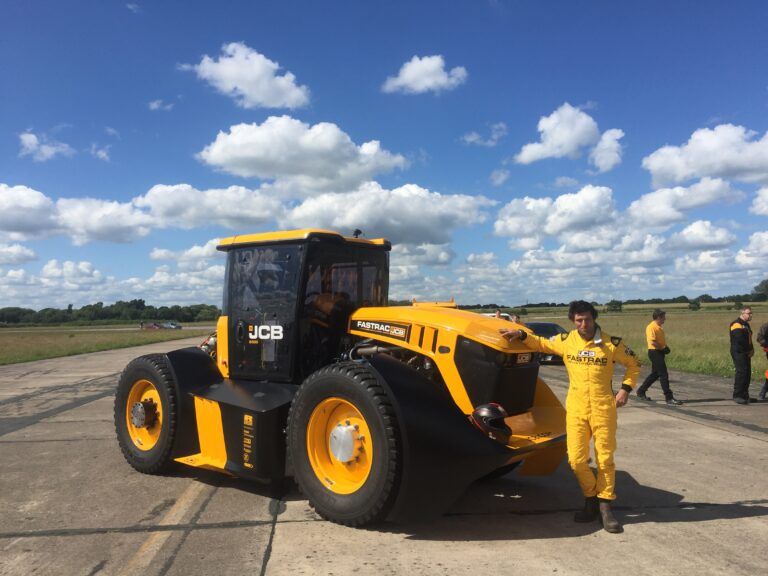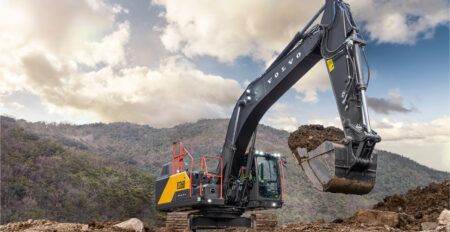TV celebrity and motorcycle racer Guy Martin was at the wheel as a specially designed JCB Fastrac smashed the British speed record for tractors at Elvington Airfield, near York, in Yorkshire, yesterday. Martin had never driven the tractor before, but he reached an average speed of 103.6mph, easily beating the previous record of 87mph set on Top Gear last year. Channel 4 cameramen were there to capture Martin’s successful record attempt and a documentary will be shown later this year.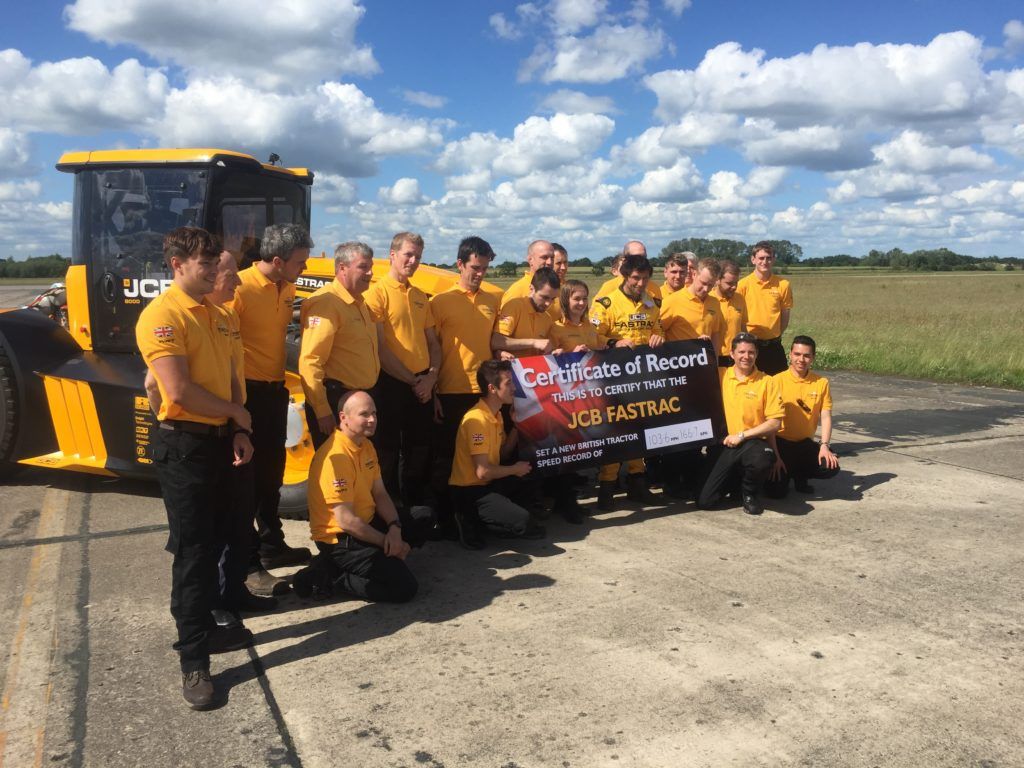
JCB now aims to overhaul the world record of 108.5 miles per hour set by a modified Allis Chalmers tractor known as The Pioneer last June at the Arkansas 1 Mile Challenge. “This is just the beginning for the team. It’s part of a bigger speed project as we now want to capture the undisputed world record,” said Tim Burnhope, JCB chief innovation and growth officer.
Tractor speed records are sometimes disputed. For one thing, there is the vexed question of what precisely defines a ‘tractor’. Top Gear’s engineers heavily modified their record-breaking tractor by adding a 5.7 litre Chevy v8 engine and four-wheel brakes. They renamed it the ‘Track-tor’ but some critics said it wasn’t authentic. Tongue-in-cheek, Burnhope described it as an “interesting product”.
But the JCB team were determined to stay as close as possible to the company’s Fastrac designs. Alan Tolley, JCB group director of engineering, wanted the record breaker to be ‘instantly recognisable’ as a JCB tractor. It has mainly off-the-shelf components used in other Fastrac models, particularly the 8000 range. Nevertheless, it has had to be modified quite a bit to achieve such fast speeds. The alterations include a smaller cab size, lighter chassis and a two-wheel drive. The engine power has also been ramped up and the tractor can reach 1,000 horsepower.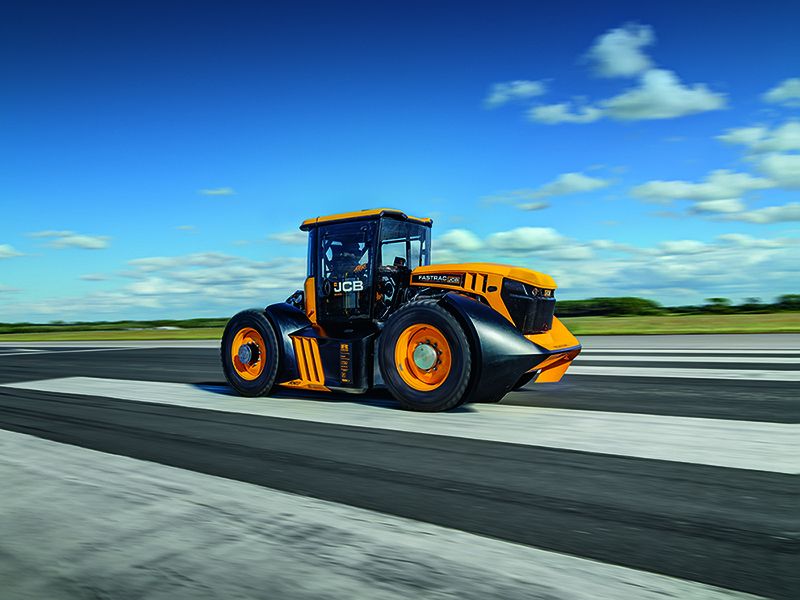
A team of eight JCB engineers with an average age of 27 set to work on the project last Autumn. Burnhope says the underlying goal was to get the young engineers to look at the ‘art of the possible’. The team were stretched to their limits and came up with ideas that could filter back into the mainstream JCB products.
There was also a lot of collaboration with other companies. Williams, in particular, played an important role in improving the tractor’s aerodynamics. The record breaker has no radiator at the front, but rather three air ducts. “We didn’t know much about aerodynamics at all, but we’ve learned loads about air flow that makes us think about it completely differently. These were mainly lessons from Formula 1,” said Tolley. Other major partners included engine designer Ricardo, fuel specialist Delphi and tyre manufacture BKT.
The date chosen for the record attempt of June 20 was 28 years to the day since the first Fastrac rolled off the production line. It began with heavy showers that delayed the attempt. But the skies cleared in the afternoon and Guy Martin climbed behind the wheel. Elvington Airfield is 10,000 feet long (3.048km) and the measurements were made over a 1km length in the middle. Martin had to drive the tractor in both directions with the two times were evened out. A 15mph wind meant that one direction was quite a bit faster. The UK Timing Association were on hand to measure the tractor’s average speed over the two kilometres and confirmed the broken record.
The team will continue to work on the speed project. Tolley says they could surpass the 108.5mph mark by the end of the year. “We’ll be analysing the data from the British record, but there are definite improvements we can make. We can add more power, but you can sometimes hit a brick wall and we’ll need to consider the resistances and aerodynamics,” he said.
To watch a video of the record-breaking feat, click HERE
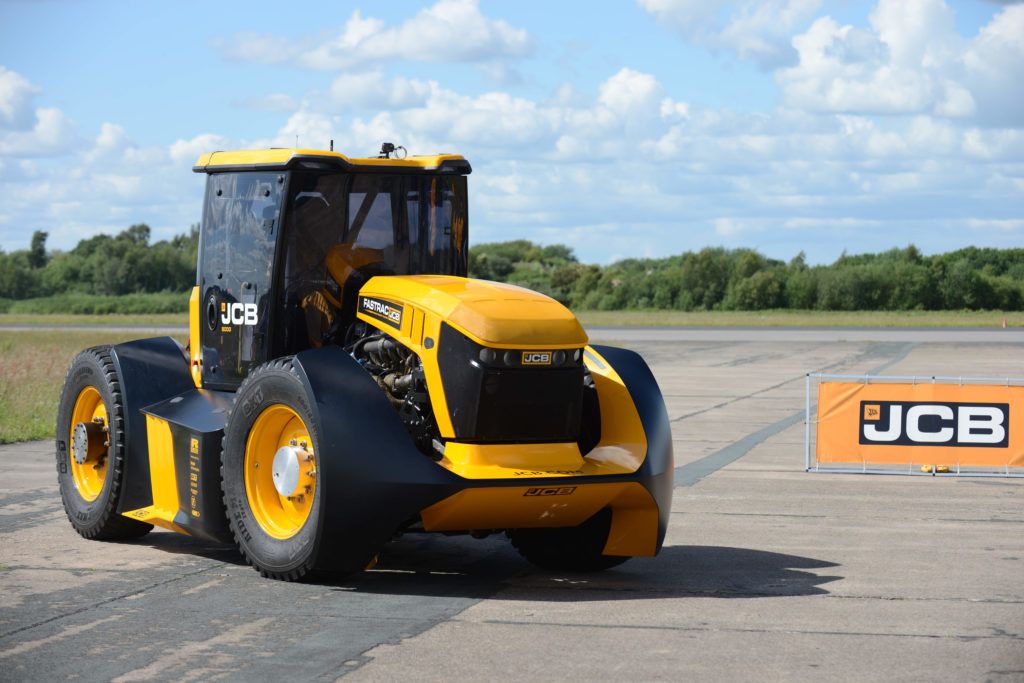
JCB Fastrack British record speed record set by Guy Martin


